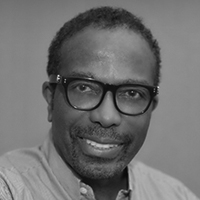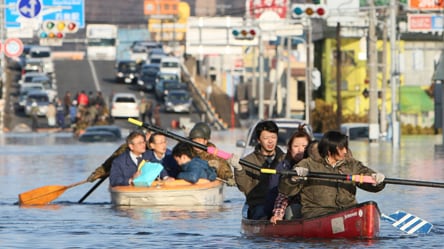Japan’s national nightmare—a devastating mix of earthquake, tsunami, and nuclear hazard—worsened on Sunday, with the death toll spiking to an estimated 10,000 residents. Rolling blackouts are planned to conserve energy, while officials are scrambling to fix problems with a second nuclear reactor. Lennox Samuels reports. Plus:
• A nuclear expert from MIT answers our pressing questions on Japan's nuclear fallout. How bad could it get?
• Eleanor Clift talks to Richard Thornburgh, the former Pennsylvania governor who oversaw America's worst nuclear crisis, at Three Mile Island in 1979.
• See shocking photos and videos from Japan's disaster zone, rounded up from social media feeds—cars washed away by floods, tremors at Tokyo's Disneyland, and more.
• Complete coverage of Japan's earthquake.
Japan's weekend of chaos continues as authorities in Japan labor to head off another nuclear-plant explosion that would leave them battling partial meltdowns in two reactors in an area already devastated by a massive earthquake and ensuing tsunami. And officials dramatically raised the death toll estimate to at least 10,000, most of it likely to come from a single town along the northeastern coast where more than half the population has not been accounted for.
Shocking Photos: Japan Devastation and Aftermath

Prime Minister Naoto Kan announced that the government had asked Tokyo Electricity Power Company to rotate blackouts throughout the country to conserve the power supply, which he said had been severely reduced by the pre-emptive shutdown of nuclear plants in the northeast, as well as some other power plants. “We do not have any prospect of restoring the electricity in the next few days,” he said. He warned that the blackouts would adversely affect water, gas and medical facilities, as well as industry—an indication that the government expects the ongoing crisis to batter the nation’s already reeling economy. “This is the biggest hardship we have experienced since World War II,” he declared.
The prime minister, looking fatigued, told a press conference that 50,000 of an anticipated total of 100,000 military personnel had been deployed to help with rescue, recovery and humanitarian efforts, along with 2,500 police officers. He added that 12,000 people have been rescued so far. “To the people of Japan, I’d like to ask you for your understanding,” he said.
Chief Cabinet Secretary Yukio Edano told reporters that hydrogen buildup in a second nuclear reactor at the Fukushima Daiichi plant could result in an explosion similar to the one that rocked a nearby reactor on Saturday, injuring four workers and contributing to the evacuation of almost 200,000 people from the area. Edano said some fuel rods were briefly exposed, raising temperatures and pushing radiation levels above the legal limit, which he acknowledged raised the “possibility” of another explosion.
“A part of the core to a certain degree within the reactor is deforming,” he said at a press briefing, but he added that the rods were not exposed long enough for the incident to be called a meltdown. And he said radiation released into the air was not sufficient to be harmful to people, comparing it to the effect having a stomach X-ray would have on a person.
The reactor, known as Unit 3, joins Unit 1, which suffered the blast on Saturday, as the plant’s two reactors—there are six in all—that could experience meltdowns if authorities are not able to cool them down. Friday’s 8.9-magnitude earthquake knocked out power at the plant and the area around it, and the tsunami disabled the backup generators that kick in during such emergencies. A water shortage, also caused by the natural disasters, has forced officials to flood the reactors with seawater in the frantic effort to cool them. If the fuel rods overheat to a sufficiently high temperature, they would burn through the reactor walls, melting them down.
“This is the biggest hardship we have experienced since World War II.”
“If the containment vessel is breached that’s the nightmare scenario,” Pakistani nuclear physicist Dr. Pervez Hoodbhoy told The Daily Beast. “I’m very worried. This is what people used to talk about when they discussed how dangerous nuclear power was. Always there would be reassurance from the other side: ‘Don’t worry. We have everything under control, we have multiple fail-safe systems.’ I hope they are right.”
Edano said nine people who had been exposed to radiation released when authorities bled vapor from Unit 1 to relieve pressure were found to have radioactive particles only on their clothes and skin. “If contamination only stays on clothes and the surface of skin” it does not present a hazard, he said.
But many thousands of residents continued to flee the stricken northeast—to escape the possibility of contamination, but also in search of food, water and shelter. In addition to the thousands evacuated because they live within about 12 miles of the plant—considered a danger zone—many took to damaged roads in their vehicles. The exodus was estimated to approach 200,000. At least 50,000 people live within six miles of the Fukushima plants.
Many residents queued for food at shops, but in most cases, the shelves had been depleted, including by people who apparently were buying out of panic. And given poor road conditions, delivery of foodstuff and liquids was spotty in a number of smaller communities in the prefectures, or states—Miyagi, Iwate and Aomori—that bore the brunt of the disaster’s destruction. Kan said the government was considering airlifts and food drops by sea because of the bad roads.
• 10 Worst Nuclear Accidents in History• Why America Isn’t Prepared for a Catastrophe• Tara McKelvey: The Nuclear Energy BacklashMeanwhile, authorities hiked estimates of the number of people killed in the quake and tsunami—from about 2,000—after being notified of the missing residents in Minamisanriku, a town of 17,300 located a mere half-mile or so from the sea in Miyagi Prefecture. Video images of what was once a quaint and thriving port town showed—instead of houses—mounds of splintered lumber strewn around, along with cars and trucks hurled about willy-nilly. Video showed similar physics-defying scenes in Sendai, the hardest-hit city, where large boats teetered atop two-story buildings, flung there by the advancing waves. Some 7,500 of the Minamisanriku survivors were being housed in shelters Sunday night.
Aftershocks continue to rattle Sendai and its environs, including a 6.9-magnitude temblor on Sunday. Many phone lines are still down in the port, which is the closest city to the epicenter of the quake, which struck at 2:46 p.m. Japan time Friday some 80 miles off the coast—crashing two tectonic plates against each other, heaving the seabed upwards, and unleashing waves of up to 30 feet onto the shore. Tokyo also is being hit by intermittent tremors—and “Quake alerts are going off like crazy,” according to Takashi Yokota, editor of Newsweek Japan.
Almost 70 countries are sending or have sent aid to the stricken country, including the U.S. which is ferrying in supplies and medicine from its military base in Okinawa Prefecture, and Britain, which has dispatched a 63-person team with rescue equipment. Others sending assistance include Germany—which itself has 17 nuclear plants—Spain, South Korea and Russia.
Lennox Samuels is a Newsweek/Daily Beast editor based in Bangkok. He covered the 2004 Indian Ocean tsunami.





